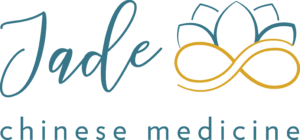Pulse Diagnosis
The pulse is measured in both Western medicine and Chinese medicine, but there are key differences. In Western medicine, we typically measure the heart rate, which is taken with blood pressure as part of a standard physical exam. In Chinese medicine, pulse diagnosis is a significantly more developed diagnostic tool, one that practitioners use to assess the health of all the major organ systems of the body.
The pulse can be a great tool for better understanding the connection between body, mind, and lifestyle behaviours.
This method is thousands of years old and has been recorded in ancient Chinese medicine texts. It has also been refined by many Masters across time. It takes many years of practice and training to have excellent skills in pulse diagnosis.
Chinese Medicine, pulse diagnosis involves examining the pulse in each wrist by placing three fingers at the radial artery. Information about the resilience of the pulse provides insights about internal inflammation, stagnation, excesses, deficiencies, and more – even indicating the location of these conditions. Qualities in the pulse gives the practitioner information about the state of your health and well-being.

For thousands of years, Chinese Medicine practitioners have observed the pulse to get a better understanding of what is happening internally. Used this way, the pulse is far more of a diagnostic tool than it is in Western medicine (where it is primarily used to observe the heart rate and regularity).
Along with tongue diagnosis, Chinese medicine pulse diagnosis is like the “GPS” of traditional medical systems. Before modern imaging techniques, healthcare practitioners needed ways of evaluating what was happening inside the bodies of their patients. Although technology has developed significantly over time, pulse diagnosis remains a very helpful tool in assessment and diagnosis.
Over the past 2000 years, Chinese physicians have mapped out which pulse positions correlate to which parts of the body. The graphic below shows the meridians associated with each pulse position.
In Chinese pulse diagnosis, pulse rate is only one of many qualities taken into account when observing a patient’s health. In addition to rate , Chinese Medicine practitioners will observe the pulse’s strength and width. All of these qualities can manifest in multiple different ways based on your overall health, and also your state of being on the day of your appointment.
Depending on the differential diagnosis, Jade will then select the appropriate acupuncture points, herbal medicine formulas, and dietary and lifestyle recommendations.

